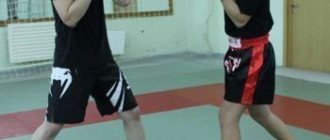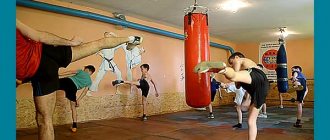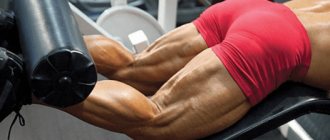Want some serious punching speed? If you've already read How to Hit Faster, then you're ready to do exercises that will increase your hand speed!
Speed kills, everyone knows it. Many great fighters have it: Muhammad Ali, Thomas Hearns, Ray Leonard, Mike Tyson, Roy Jones, Floyd Mayweather, Manny Pacquiao, I could go on and on.
Being able to hit your opponent with a punch before he can hit you with yours is perhaps one of the greatest advantages in boxing. The difference of a split second can make the difference between raising your hand in victory and lifting yourself off the canvas. Even if you were not born with speed, you still need it. Even if it's not part of your style, you still need to develop it. And I ask you to include these important exercises in your regular program, because everyone knows: SPEED KILLS!
I know the goal is speed, but don't rush yourself with these exercises. The most important factor in achieving maximum strength is relaxation. Relaxation is first of all a state of mind, which then becomes a material reality. Keep your mind clear and don't focus on one thing too much. Relax! Relax! Relax!
Instead of complementing speed with strength and precision, focus on balance and coordination. A lot of beginners try to put both power and speed together at first, but this only slows them down and forces them to load up for punches. Don't load up on your punches or try to focus on hitting the target. Instead, give your arms free rein, just try to keep your balance underneath you and your movements coordinated with the speed of your arms.
Sharp and Relaxed Breathing = Sharp and Relaxed Movement
Shadow Fighting (Pure Speed Training)
Shadowboxing is everything! The more time I spend in this wonderful sport of boxing, the more I realize that sometimes shadowboxing is all you need. This simple practice allows you to master each technique without wearing out your joints or straining your body. This underrated exercise can help you develop almost everything in boxing: footwork, balance, strength, technique, and of course in our case, SPEED!
Shadow boxing is perhaps the purest form of speed training. There are no bags to stop your blows, no gloves that press your hands down with their weight. You punch the air with just the weight of your arms. Without anything slowing you down, this is the fastest speed you can move your arms. You can hit as fast as you can imagine your combinations. Shadowboxing can develop your mental speed, your punching speed, and your hand return speed.
Shadow Boxing Exercises:
Start moving around the ring and relax your whole body. Don't worry about squeezing your hands completely. Strike correctly, but not in a way that makes your shoulders tense and tired. You need your whole body to be relaxed when you do speed shadow boxing!
Here are the beat numbers I use:
1 = left jab 2 = right straight / right cross 3 = left hook 4 = right hook / right overhand 5 = left uppercut 6 = right uppercut *vice versa if you are southpaw
Ok, HERE THEY ARE! Follow them and combine!
Basic jab
Double jab
Lined jab
Jab, Right Cross
Left Hook
Left-Right-Left-Right!
| Skillful Combinations
Uppercuts
Long Combinations (focus on sharp, fast breathing!)
|
Work 3 rounds. Exhale with every stroke and with every movement. Don't worry about doing all the combinations in the list above. Stick to your favorites and then try one or two new ones each time. You should NOT be tired. If you're tired, you're too stressed. Relax your shoulders even more and maybe even slow down a little. If you're running out of steam throwing punches in the air, imagine what it would be like in the ring.
When you step during combinations, take VERY SMALL steps. You only need to take 2-3 centimeter steps, so your legs can move as quickly as your arms. If you take large steps, your feet may still be in the air, leaving your kicks without any support on your feet and without power.
Don't worry about strength! Some sequences with double backhands or double forehands will feel weak. Once again, you are only working on speed, not strength. Just let your hands fly and add a little rhythm. Take a few breaks from time to time between combinations and then get back up to speed.
One last note, watch Manny Pacquiao shadowbox in the video below. What he does is a perfect example of high-speed shadowboxing. Sharp breathing, very small steps, focus on quick strikes. He doesn't focus on single hits, he focuses on entire combinations. And for the 923084723rd time, RELAX!
Development of reaction speed
Developing a boxer's reaction speed plays the most important role in both defensive and offensive fighting techniques. A boxer’s reaction to a blow can be conditionally divided into several stages: anticipation of a blow (the athlete carefully monitors the opponent’s actions, focuses on his technique, is internally very tense), preparation (the boxer focuses on the upcoming blow, mentally prepares to carry it out, the brain signals irritation) and execution of the blow (the impulse reaches the athlete’s muscular system and the blow is made).
Often the first two stages require significant psychological effort and time from the boxer. To minimize the time needed for a boxer to understand the opponent’s upcoming move and prepare to respond to it, it is first of all recommended to perform exercises with a partner or “on the paws”, practice light, quick strikes in the air, learn to keep the opponent constantly in sight and try to predict him movements. By improving his fighting technique, a boxer brings his movements to the point of automatism, which allows him to more easily adapt to the stress in the ring, reduce the time required to comprehend the opponent’s tactics, and carry out a high-speed attack in battle.
Reaction speed gives the boxer the opportunity not only to anticipate the enemy’s attack, but also to quickly move around the ring and deliver his blows advantageously. Of course, the development of the speed of muscle contractions and the technical training of the athlete are of great importance for this.
Quick Strikes on the Bag (Speed Endurance)
Fast strikes are not always speed. Sometimes it's endurance. Moving weight faster always takes more energy. So it's quite difficult to throw fast punches or even practice fast punches if you don't have the stamina for it.
Throwing a bunch of fast punches can wear anyone out. You don't realize it at first, but as you get tired, your slower opponent suddenly becomes faster than you. An even greater danger from fatigue is that your punches become too slow to hit your opponent. So let's work on your speed endurance so you can throw quick punches throughout the fight—not just the first round.
Exercise Impacts At Intervals:
Find yourself a partner and stand with him on opposite sides of the bag. One boxer holds the bag motionless while the second punches the bag without stopping for 15-20 seconds. Then you change. Do this until the 3-minute round is over and then take a minute break. 2-3 rounds of this exercise is a great way to finish off your bag training.
Some Thoughts About This Quick Strike Drill:
- Don't waste time bothering someone to count down 15-20 seconds for you. Instead, just count in your head or out loud while you throw your punches. When you're done, just stop and your partner will instinctively know to start throwing punches.
- You can perform various variations on the bag. In the first interval, throw regular punches, aiming high (palm down, aim for a point on the bag 15-20 cm above your head). In the second interval, throw vertical punches, aiming at shoulder height on the bag. By "vertical strikes" I mean strikes where the palm faces to the side, like a "stationary fist." In the third interval, throw SMALL short uppercuts to the bag at body level. Continue repeating until the end of the round.
Interval punching exercises develop endurance in your arms and shoulders. Which is VERY important in the later rounds of a fight or sparring. It doesn't matter if your whole body doesn't get tired...
When your arms and shoulders become too tired, your punches become too slow to hit your opponent.
Sure, you can still have your power in the later rounds, but if you don't have speed, that power won't matter! So work to make sure you increase your arm and shoulder endurance. In case you haven't noticed, this fast-punching exercise is a boxing rendition of Tabata exercises (in case you want to know more about the theory behind this training method).
A very important reminder, don't get too proud and try to hit the bag at that pace for the entire 3 minutes. Rest pauses allow your arms to regain energy to hit at maximum speed. You should always train at your true top speed (working at 100% when you are exhausted is not “true top speed”). Think about it, sprinters don't train for speed by running 2 miles at a time. Instead, they run short sprints, take a break, and repeat (aka Interval Sprints). The pauses allow their legs to regain energy to run at full speed again. This way, you spend more of your time training at full speed, rather than at half speed, which is what happens when overly ambitious beginners work out for 30 minutes without a break!
Another point about not skipping breaks is that your workout can be better when you constantly have to stop and start again. Throwing punches without stopping is easy when you are already on the move. But stopping and starting again, like in a real fight, is much more difficult when you have to keep running your rhythm. So please don't skip breaks. 15-20 seconds for each, then change!
Explosive Speed
The first type of speed - impulse - depends directly on the creatine-phosphate energy process. This resynthesis pathway is used at maximum load (90%-100%), but lasts no more than 10 seconds. This way you can train maximum speed, but in a very short period of time, i.e. no more than 10 seconds.
Training for this type of speed consists of short bursts of maximum speed. Additional weights (weights for legs/arms) or resistance (rubber expanders) are also acceptable.
This is the work plan. We work for 5-10 seconds at maximum speed. To do this, we do either continuous movements for a total of 10 seconds. Then rest for about 30-40 seconds - repeat at least 10 times, but no more than 20. The second option - make one movement (strike) with maximum speed and force, prepare for a couple of seconds for the next strike, repeat this for about 10 strikes. Then rest for 2-3 minutes. This will be one circle. In total you need to repeat 3-5 circles.
The exercises themselves need to be selected so that they capture exactly the right muscle groups for your direction. It is also very important that the exercises are not too technical, your nervous system should not be too distracted by the technique. Those. exercises must be selected so that it is possible to create maximum speed and power.
Weights for speed training
Regarding weights for explosive strength. They are very desirable, since they involve more effort and there will be more recoil, but the main thing is that the burden is not so great that the mechanics of movement break down.
Another important point about weights is that you shouldn’t use them all the time. The fact is that sometimes a strange effect is observed. If you do each workout with weights and then without them, your nervous system cannot stimulate itself enough, i.e. you kind of get used to working with weights.
Rest between sets
The rest between approaches should have been sufficient to restore, first of all, the nervous system. The fact is that the nervous system gets tired much more and takes longer to recover. Therefore, the stronger the load and the more complex the movement, the more rest you should take between approaches. If time allows and speed qualities are more important to you than endurance, then you can take long rests, 3-5 minutes or more. The main thing is not to spend it passively during rest, it’s better to walk around, do simple warm-up movements, in general, not to cool down too much.
Examples are interval sprints, plyometrics, explosive lifts of barbells, kettlebells, sharp kicks, punches with weights.
Forced Speed Training (Pneumatic Bag and Punch Bag Stretch)
An air bag and stretch bag are excellent equipment for developing speed. In addition to improving accuracy, timing, reflexes and coordination, they are also very good for “forced hand speed” exercises. Hitting quickly is quite easy if you only hit when you feel like it. Unfortunately, this never happens in real battles. In real fights, you are always FORCED to throw punches, even when you don't want to. Because you throw these punches out of panic rather than as an act of your own intentions, these "forced punches" wear you down faster. So let's go back to the pneumatic bag and the stretch bag, they force you to hit even when you don't want to. No matter how tired you are, you MUST hit the bag.
The pneumatic bag and the stretching bag also have their own exceptional qualities. The pneumatic bag develops arm endurance and shoulder endurance. The stretch bag helps improve accuracy and timing. This projectile forces you to constantly react quickly and think quickly. Learning how to work a punching bag is an art in itself. I'll save that long explanation for another day. For now, just know that these implements will improve your hand speed. Perform 2-3 rounds on the pneumatic bag and stretch bag.
Resistance Training for Speed Muscle Development
Push-ups (Explosive Speed)
Push-ups, when performed with speed-oriented technique, can help you add speed to your punches. Since everyone's hands are different, you need to find the perfect fit for where to place your hands and how low to go. Focus on speed, not strength. You need to finish this set FAST!
TRICEPS PUSH-UPS
- Because of my long arms and thin frame, I prefer to do push-ups where I only go down a third. This means that I only work the triceps in this “stretch” phase of the push-up. I do about 10 short sets with only 10-15 reps each. Once again, I only work at the top of the pushup to maximize fast speed and try to explode with each pushup. Focus on going down fast and going up fast (most people go down slow, go up fast). When you pause, pause at the top of the push-up, not the bottom.
PUSH-UPS WITH MEDICINE BALL
- Lower yourself into a push-up position, but place one hand on the medicine ball. Once you do a push-up, quickly move your body to the other side of the ball, resting your other hand on the ball. Do push-ups as fast as you can. 3 sets of 15 times. Another variation you can do is to take 2 medicine balls and place them at a distance wider than your shoulder width. Keep one hand on the ball and the other hand on the floor between the balls. Once you do a push-up, you move your body to the side, so both arms are constantly moving to the side and to the center. (If you need a more detailed explanation of this exercise, leave a comment). Again, 3 sets of 15 reps.
COTTON PUSH-UPS
- Another type of pleometric style pushup that I like is the clap pushup. You can do 3 sets of 10-15 push-ups with clap. What is important is to spend a minimum of time in the bottom push-up position. You don't necessarily have to fly high, but just make sure you don't spend too much time with your arms bent at the bottom of the push-up.
The Best Exercises for Punching Strong and Fast
Strength and speed are rarely combined in one single movement of the hand, which is why strong slow blows are often obtained, or fast weak ones. Therefore, at the beginning of training it is necessary to perform exercises that focus on speed and strength, but separately. That is, perform one exercise focusing on strength, and the second exercise on speed. There is also a method of daytime training, when a person devotes not just one exercise to each of the impact points, but the whole day. That is, we will consider exercises that will help develop speed, and then strength.
Speed Punch Exercises
Exercise 1 – “Sledgehammer – chain”
At the very beginning of training, you need to realize that during an impact there is tension only in the fist. The rest of the hand should be relaxed. Thus, an allegory with a sledgehammer and a chain is formed. The sledgehammer is the fist and the chain is the rest of the hand. During the exercise, you need to learn to tense only your hand. This allows you to reduce the load on your shoulders and forearms, thereby minimizing the risk of pulled muscles.
This exercise is carried out until the “Sledgehammer – Chain” effect works on a subconscious level. That is, during training of direct strikes, the body itself is already adjusted to this state, this is the so-called muscle memory. This exercise is carried out using simple direct blows. It is important that from the very beginning the relaxation is concentrated in the shoulders in order to increase the efficiency of the exercise. To achieve maximum effectiveness, you must exhale during each strike.
Result:
- After performing the exercise, you should feel discomfort (fatigue, pain) in your elbow joints;
- Normalization of breathing. Endurance appears;
- Hands are able to withstand more intense loads.
Errors:
- The kick is performed with tense shoulders;
- At the moment of impact, the person takes a breath.
Exercise 2 – “Push-ups with clapping”
It is known that push-ups are one of the most versatile and useful exercises for the body. Not just for impact speed. Adding another element to it - cotton. From the outside it looks simple. During the extension of the arms, a strong upward jerk is made, due to which the body jumps a little (spring), and at this moment you need to perform a small clap in front of the chest. This helps increase the speed of movement of the entire arm, since all its muscles are involved in the process.
You need to do the exercise several times, three times a day. After pushing up with this method is no longer difficult, it is recommended to add another cotton. It will be done with both hands across the chest. That is, while extending our arms, we first clap our hands in front of us, and then with both hands on our chest. This new element will help increase the coordination of movements of both hands. So that during the strikes a continuous chain is created at equal intervals.
Result:
- Increased load on the respiratory system;
- Hands work more smoothly;
- Everything happens on a mechanical level, that is, there is no need to control movements with the brain.
Errors:
- Instant transition to a more difficult exercise. This may cause injury.
- Hitting the chest too hard.
Exercise 3 – “Push-ups with a turn”
Don't go too far from push-ups. The next exercise is much harder than the ones mentioned above. Most athletes claim that this method of developing hand speed is superior to various barbell lifts or punching bags. The fact is that during push-ups, every three to four times you need to push off the floor as hard as possible and make one full rotation of 360 degrees, and at the same time return to the starting position. From the outside it looks simple, but in reality...
In almost 95% of cases, the first attempts are unsuccessful. This exercise puts the maximum load on a person’s hands. The main goal: to teach how to tense and relax your hands. This will allow you to use a minimum of effort when striking and give your hands a rest during those moments of rest.
Result:
- Achieving the maximum speed for a person;
- Movement coordination;
- The ability to give your hands a rest during a fight.
Errors:
- Insufficient preparation (warm-up, performing other, less complex exercises);
- Risks of damaging your hands.
Exercise 4 – “Throwing a weighted ball”
Almost all gyms have ordinary-looking balls that are filled with sand or other materials. Most often they weigh from 5 to 8 kilograms. These balls are great for developing arm muscles, their reaction speed and endurance. We take one such ball, stand in a stance one and a half to two meters from the wall, and try to throw it so that it flies back. This exercise is universal, as it is also suitable for strength.
Result:
- Ability to coordinate speed with force;
- Development of endurance.
Errors:
- The desire to throw more and further, which leads to injuries and rapid fatigue;
- The desire to start the exercise with the heaviest ball.
Exercise 5 – “Raising the bar forward and up”
This exercise emphasizes both speed and strength at a specific point. You need to choose a bar for yourself, most often no heavier than 15 kilograms. Hold it with your hands in front of you with your elbows bent. Holding the bar near your chin, take the proper stance. Next, with sharp movements straight up, raise the bar so that it is at least slightly above your head. This exercise uses all areas of the muscles in the arms, activates endurance, and helps you learn to breathe.
Result:
- Maximum pumping of endurance;
- Smooth breathing.
Errors:
- Overestimating your own strengths (using a bar that is too heavy);
- Increased percentage of injuries due to improper execution of the exercise.
Strong Punch Exercise
Next we move on to strength. In this case, everything will be much simpler, since any strength exercises can increase the force of the blow. Also, do not forget that the two exercises that we looked at - the fourth and fifth - can also be classified.
Let's look at a few more exercises that will help increase your punching power with maximum efficiency.
Exercise 1 – “Pull-ups on the horizontal bar”
It is difficult to start training punching strength if a person is unable to lift his own weight. Therefore, the first exercise will be pull-ups. This is one of the most effective and universal methods, which was revered by all masters. All these barbells and weights weighing 50 kilograms are the so-called “show-offs for visitors.” An experienced trainer will tell you that the easiest way to train strength is with a horizontal bar. It is enough to set your own limit at the current moment, and develop it by adding one more pull-up to the maximum number of pull-ups every five to six days.
Result:
- Almost unlimited development of strength and endurance, due to the technique of adding one to your own best result;
- Easy to do. You can perform pull-ups anywhere there is a bar, or something similar to it.
Errors:
- Due to the long development (the results are noticeable after a long time), many give up this business, considering it useless;
- There is no tension on the legs (if the pull-up does not occur while holding the legs at an angle).
Exercise 2 – “Bars”
Another legendary helper in developing a strong punch. Due to the fact that the main load falls on the hands, a significant development of strength occurs. It is recommended to perform not only push-ups on the uneven bars, but also various tricks. This will allow you to get good results in a relatively short period.
Result:
- Strength is pumped up as quickly as possible;
- All areas of the arm muscles are involved.
Errors:
- Difficulty in choosing a program;
- Risk of severely pulling the forearm muscles.
Resistance Training for Speed
Harnesses
You can also develop fast punching speed through harnesses and isometric training. The harnesses apply constant force as you throw punches. This constant resistance allows you to develop speed and explosiveness throughout the movement. Regular weight training cannot do this because the weight is only heavy at the beginning. Once you push the weight out, your momentum makes it easier when you throw your arm out. Swimming can be a very good aid to resistance training because the water is constantly working against you.
Isometric Workouts
Isometric training is a type of training in which you apply force, but your body does not move at all. But how can you apply force without moving?! You can do isometric arm training by walking up to a wall and getting into a punching position where you could theoretically punch the wall. Now push off the wall for 10-15 seconds, 3 sets at a time. You can stand at different angles that simulate different punches and target different muscles (chest, shoulders, triceps).
The theory behind isometric speed training is that you train your arms as if they were rubber bands. You train your arm muscles to store energy so that as soon as the hold ends... SNAP—your arm flies out like a charged rubber band.
Foot speed in football
A great way to develop foot speed and agility, improve coordination, and increase ground speed is to train with the Speed Ladder.
Exercises for leg speed do not involve overload, they are aimed at the quality of movements. It's best to include ladder exercises at the beginning of your regular workout, after your warm-up. Your muscles need to be fresh to ensure quality movement. And you should have a lot of strength left to continue resistance or endurance training. To be the best and ahead of your opponents, you need to train your legs for speed and endurance, as well as improve your movement technique using all sorts of tricks.
Important: Take your time, make sure you do each exercise correctly first. We work on the principle: “quality is more important than quantity.” Gradually increase the pace. For convenience, print out pictures of the exercises and take them with you to training. We suggest several ladder exercises to train your leg speed. You can additionally develop your own. It is important to observe the correctness and frequency of movements.
Well, a few simple tips:
- Always keep your head straight and in line with your knees to maintain balance;
- When moving, your legs should come off the surface at a minimum distance, which reduces the time when changing movements, increases the speed of your legs, you seem to be gliding along the surface;
- arms and shoulders are relaxed during the exercises.
| 1. First, the simplest exercise, reminiscent of the “classics” from childhood: | |
| |
| 2. It's also not a difficult exercise. The movement of the legs is alternating. | |
| |
| 3. Let's complicate things a little more. More attention will be required here: | |
| |
| 4. The next exercise will require even more dexterity and skill from you. Therefore, slowly try to achieve correct, smooth execution and only then increase the speed. | |
| |
Happy training with the Speed Ladder!
Return Muscles
The speed of the arm's return is something that MANY boxers miss in speed training. Everyone loves to work the striking muscles, such as the chest and triceps, but rarely does anyone work the return muscles, such as the back, lats, and hamstrings. What many boxers don't realize is that the return phase is half the movement of a punch, so being able to get your hands back faster allows you to punch again much faster!
I've also noticed that many beginners do nothing more than work on the bag in training. The bag is a strong object, meaning if you hit the bag, it will always spring your arm back, which does not train your return muscles. Sure, you can easily work the bag for 10 rounds, but what happens when you spar? After you miss just a few punches in the ring, your arms will be completely tired and you won't know why. That's because you're not used to missing and you're not used to punching through the air, and your return muscles (back, back of the shoulders, and lats) aren't developed to bring your arm back quickly enough.
The best exercises to strengthen the reflex muscles of the arm:
A fight with a shadow
- You're constantly throwing punches through the air while shadowboxing, which forces you to use your muscles to bring your arms back. Try shadowboxing at 100% speed with gloves and you will understand how weak your recovery muscles are. You don't need to add weight or do anything else. Even regular shadow boxing will help you balance your back core muscles with your front core muscles.
Pull-ups
- Pull-ups are a great exercise for the back and lats. Do 3 sets of 6, 8 or 12 reps. Whatever you can't do, just do it. Now your upper body will no longer look so hunched over.
Stretching Exercises
- I'm too lazy to list all the names of the exercises. Any exercise that simulates the motion of throwing your arm out should do the trick. I have TRX Suspension bands at my gym and they work great for this, but lowering the rope or stretching stretch ropes will also work.
Stretching
Loose, relaxed muscles have the potential to move faster. Don't fight with pain in your shoulders or body. Make sure you do good stretches and spend significant time warming up your muscles. Even on days when you don't train, try to stretch. Many of the fastest fighters I have met are often the most flexible people I know. (I wrote an article about the importance of flexibility in boxing .) FYI, you should stretch for a MINIMUM of 30-45 minutes before each workout and then another 10-20 minutes at the end of each workout. Professional boxers, and perhaps elite athletes, usually do this at double the rate.
Final Thoughts About Hand Speed Exercises
Speed starts from the head and ONLY THEN in the body...
If you can't think fast, you'll never be able to move fast.
...be that as it may, your body can't box on autopilot. Relax your mind, concentrate and stay focused, but be aware of everything that is happening around you. Don't focus on every single shot. Try to focus on the whole combination or the whole bunch. Each combination of strikes has its own purpose, whether it is to get in close, or to land a hook to the body, or simply to force the opponent to defend himself, to create space for himself to escape.
Oh, and one more thing. Don't try to do every exercise above on one day or every training day. Use several variations and focus on one thing a day rather than everything every day.










